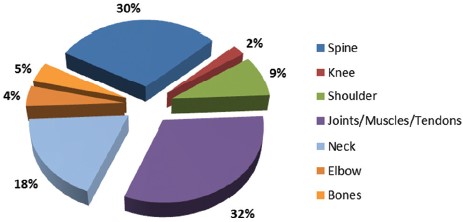Comparison between capacitive and resistive electronic transfer therapy and high-intensity laser therapy in pain conditions related to musculoskeletal disorders
DOI:
https://doi.org/10.17532/jhsci.2022.1744Keywords:
Capacitive and resistive electronic transfer, TECAR, musculoskeletal disorders, pain, analgesic effects, high-intensity laser therapy, physical therapy, quality of lifeAbstract
Introduction: Musculoskeletal disorders (MSDs) imply damage to muscular or skeletal systems, which usually develop due to strenuous, repetitive activity, or an inflammation process. The therapy with capacitive and resistive electronic transfer (CRet) and high-intensity laser therapy (HILT) have mainly been applied for pain relief in these conditions. This paper aims to provide an overview of the efficient results of CRet therapy and HILT in managing pain associated with musculoskeletal disorders found in the available literature.
Methods: Articles related to musculoskeletal disorders were searched through electronic databases, such as PubMed, Web of Knowledge, Lilacs, Cochrane, Research Gate, and available website search tools. After excluding records that are not clinical trials and studies (such as review articles, patient information, and Ph.D. papers) and articles which did not deal with pain in musculoskeletal disorders, 61 articles met our criteria and were included in the overview.
Results: By reviewing the selected articles related to CRet therapy and HILT effects on pain in musculoskeletal disorders, it was found that both therapies have a favorable effect on pain reduction.
Conclusion: The selected papers showed that both therapies are powerful tools for pain reduction. Although there are no specific protocols, including the number and frequency of therapies applied and other parameters, in both therapy modalities, pain alleviation occurs during or immediately after a therapy cycle application.
Downloads

Downloads
Published
License
Copyright (c) 2022 Žarko Mitrić, Maja Vučković, Amra Mačak-Hadžiomerović, Miloš Lalović

This work is licensed under a Creative Commons Attribution 4.0 International License.










